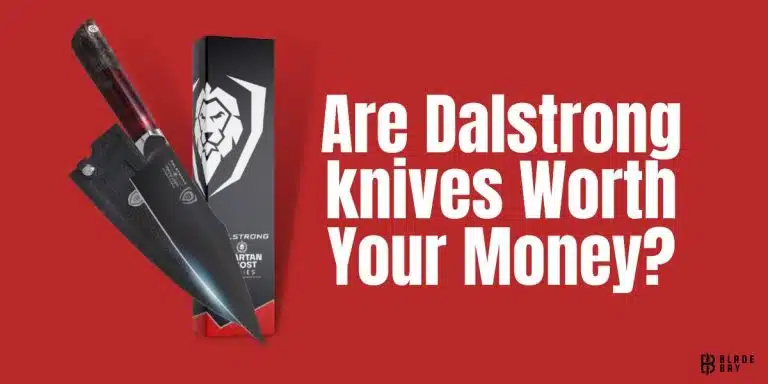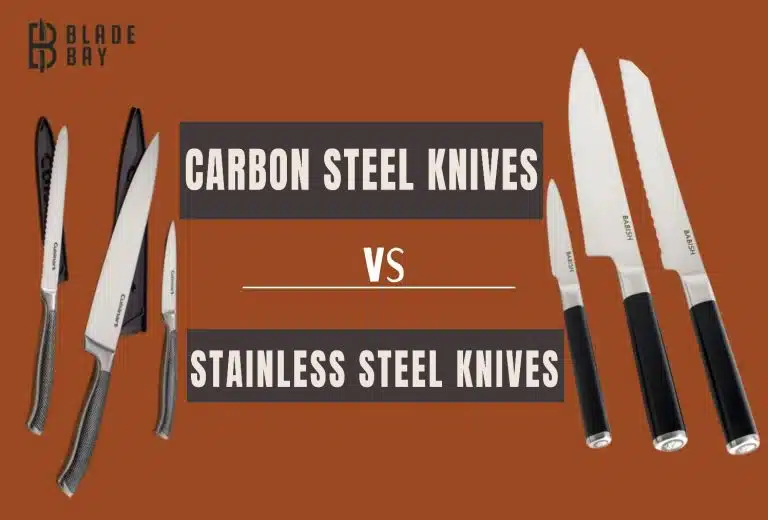Knife Sharpener vs Whetstone: The Ultimate Showdown!
Table of Contents
ToggleKnife Sharpener vs Whetstone: The Ultimate Showdown!
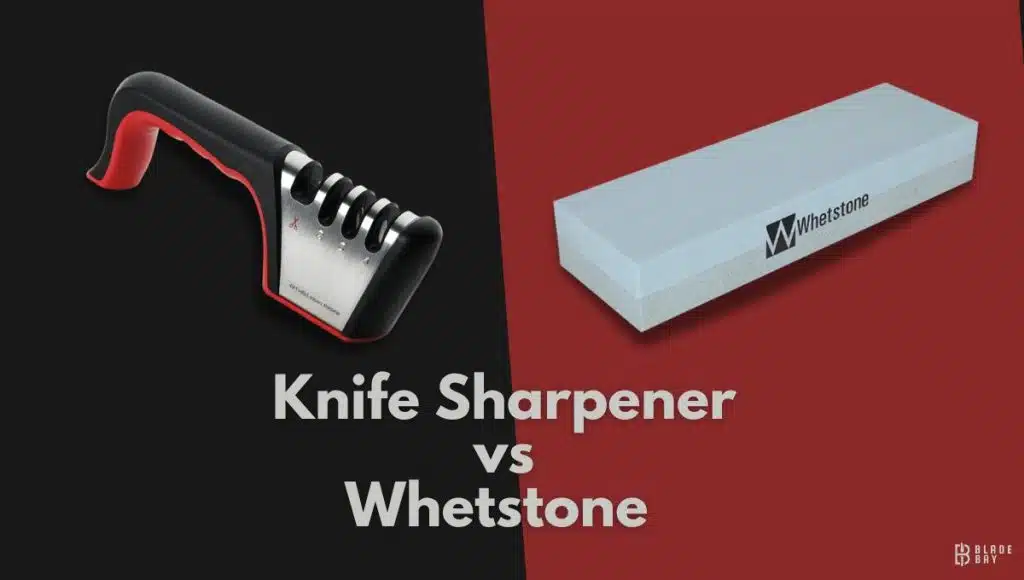
Knives are pretty common and crucial kitchen/outdoor equipment we need quite often in our daily life. However, we all come across the point when our knives become dull and need instant sharpening. So, we look for the proper sharpening process, which leads to two popular options: knife sharpener vs. Whetstone. More specifically, the convenient or the traditional way.
Sharpening a knife is an art, and the selection of the appropriate sharpening tool can significantly impact the outcome. Going for the right decision of choosing between a knife sharpener and a whetstone might appear overwhelming as both of these tools can be effective, but they have their differences.
In this article, we’ll explore every aspect that will determine which sharpening method is best for you so you can make an informed decision.
Now, if you are in a hurry,
According to culinary professionals and experts, the most effective tool for sharpening knives is a whetstone. Why do you ask?
Well! Let’s give a deep dive then:
Sharpeners are tools that can make the knife sharpening process easier for those who may not have the expertise or time to use traditional methods like whetstones. They are essentially machine-like tools that use abrasive belts to sharpen the blade’s edge. These belts come in different grits, ranging from coarse to fine, which can produce symmetric results along the blade’s edge in a shorter time compared to whetstones.
There are two main types of sharpeners available in the market:
- Manual sharpeners, and
- Electric sharpeners.
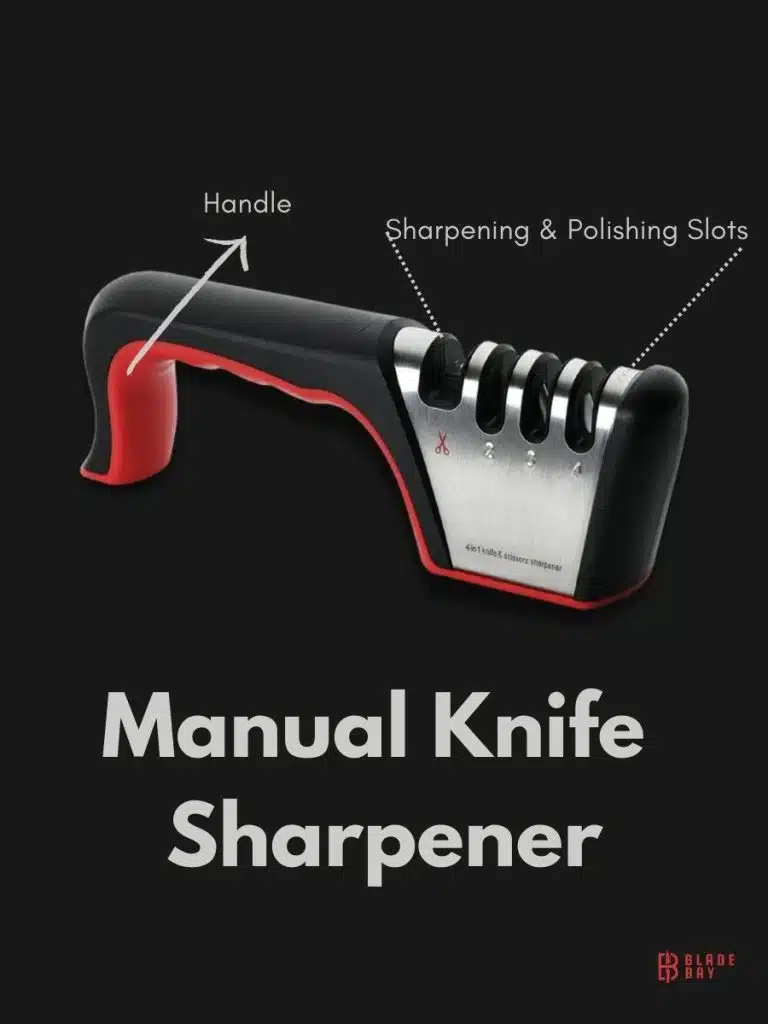
Manual sharpeners: These are knife-sharpening tools that feature multiple stages and abrasive surfaces intended for different degrees of blade sharpening. These handheld devices come with removable and attachable guide rods that provide a predetermined angle when sharpening the blade to achieve the desired shape.
Of course, different blades require sharpening at different grades, which is why handheld sharpeners come with multiple stages. You can use the lowest setting for regular maintenance and touch-ups, while the highest stage is meant only for blade reshaping after extensive use. Some models include a honing stage to remove dents and an extra-fine stage for honing and polishing.
Manual knife sharpeners are versatile and dependable, but they require some degree of practice to master. However, some people consider this the best knife sharpener for beginners.
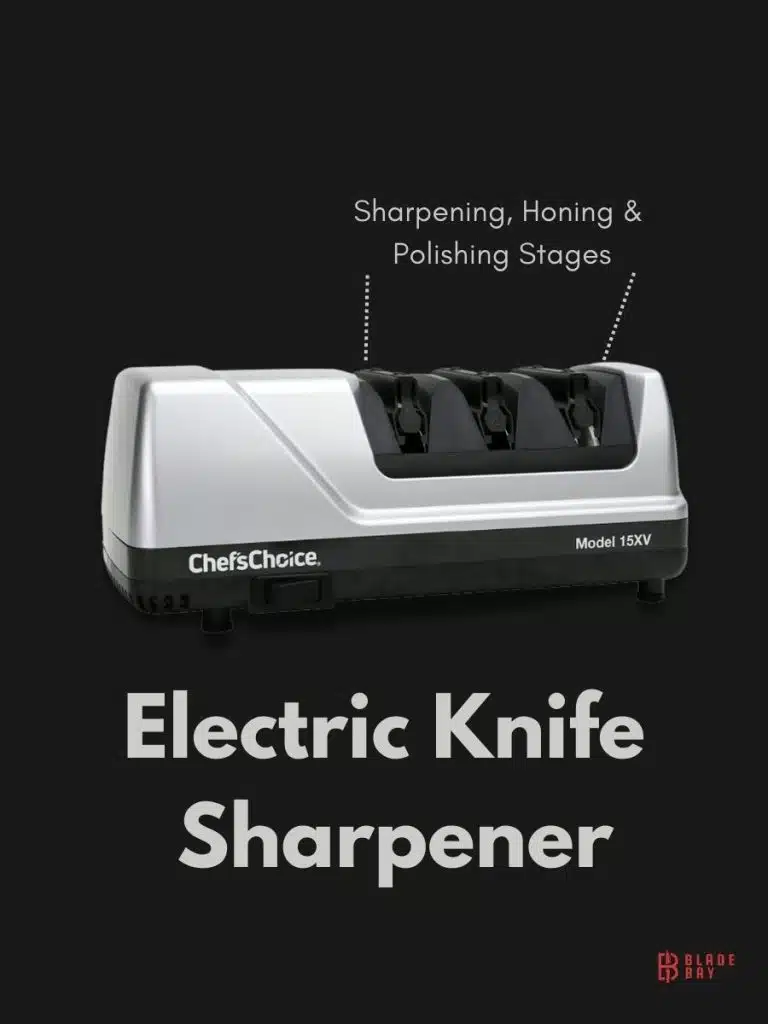
Electric sharpeners: Electric knife sharpeners use motor-driven abrasive belts to sharpen your knife blades automatically, making the process quick and effortless. They come in different sizes and shapes, from compact models suitable for home kitchens to larger ones for commercial use.
Most electric knife sharpeners have two to three stages of sharpening, with each stage featuring a different grit level. The first stage is for coarse sharpening. It removes any chips and nicks on the blade’s edge. The second stage uses medium grit to refine the blade’s edge, while the final stage uses fine grit to polish and hone the blade to a razor-sharp edge.
Electric sharpeners are easy to use, and some models even feature automatic angle guides that ensure the correct angle for sharpening.
However, they can be a bit loud and generate a lot of heat, which is a matter of concern for some users. Additionally, they may not be suitable for certain types of knives or those with extremely dull or damaged edges.
Electric knife sharpeners are an excellent choice for those who need to sharpen their knives frequently and require a quick and efficient solution.
How to use a Knife Sharpener?
Knife sharpeners are simple to operate. For manual sharpeners –
- Place the sharpener on a stable surface, and make sure it won’t move while you’re using it.
- Identify which slot is for sharpening and which is for honing. The sharpening slot will have coarser grit, while the honing will have finer grit.
- Depending on how dull the knife is, start with the coarse grit or skip straight to the fine grit. Insert the knife blade into the slot, and make sure it’s properly aligned. (Make sure your fingers are behind the heel of the blade)
- Pull the blade through the slot, applying light pressure and keeping the angle consistent. Repeat this 2-3 times on each side of the blade. (Use your dominant hand while sharpening)
- If your sharpener has a honing slot, repeat step 4 (5-6 times) until your knife edge becomes smooth.
- Clean the blade with a cloth, and test the sharpness of the blade by gently slicing through a piece of paper.
For an electric knife sharpener –
The process is quite the same as a manual sharpener. However, instead of manually operating the sharpening tool, you simply need to plug it into an electric outlet to start the process.
Also,
There are a few other differences like an electric sharpener has three stages –
- Sharpening
- Honing, and
- Polishing.
So, you need to first sharpen the knife, then hon it, and finally polish it at the final stage. That’s pretty much it.
Knife Sharpeners: The Positives and the Negatives
Pros:
- Easy to use: Knife sharpeners are generally very user-friendly and require little to no expertise to operate.
- Quick: Knife sharpeners can sharpen your knives in just a few passes, making them a time-efficient choice.
- Consistent: Knife sharpeners produce a consistent edge on your knives, which can be useful if you want all your knives to have the same level of sharpness.
- Convenient: Knife sharpeners can be used almost anywhere, making them a great choice for people who don’t have a lot of space or who want to sharpen their knives on the go.
Cons:
- Expensive: Some knife sharpeners can be quite costly, especially electric models.
- Can damage knives: If not used properly, knife sharpeners can damage the blade of your knife or remove too much material, which can shorten the lifespan of your knives.
- Limited control: With a knife sharpener, you don’t have much control over the angle of the edge you’re creating, which can be a problem for more advanced users who want a specific angle.
Types of Whetstones
Wheatstone, also known as sharpening stone is the traditional way of sharpening knives. It’s also a popular one among the most renowned chefs.
Using sharpening stones to sharpen knives requires a learning curve and more time compared to using a sharpening machine, but the results are superior. This technique is suitable for sharpening both German-style and Japanese-style knives and can be applied to almost every type of knife.
Whetstones are typically made of materials such as ceramic, diamond, or natural stone. They are available in several sizes and grits to accommodate various sharpening needs. Normally, there are three types of whetstones –
- Water Whetstone (Most common one)
- Oil Whetstone, and
- Diamond Whetstone
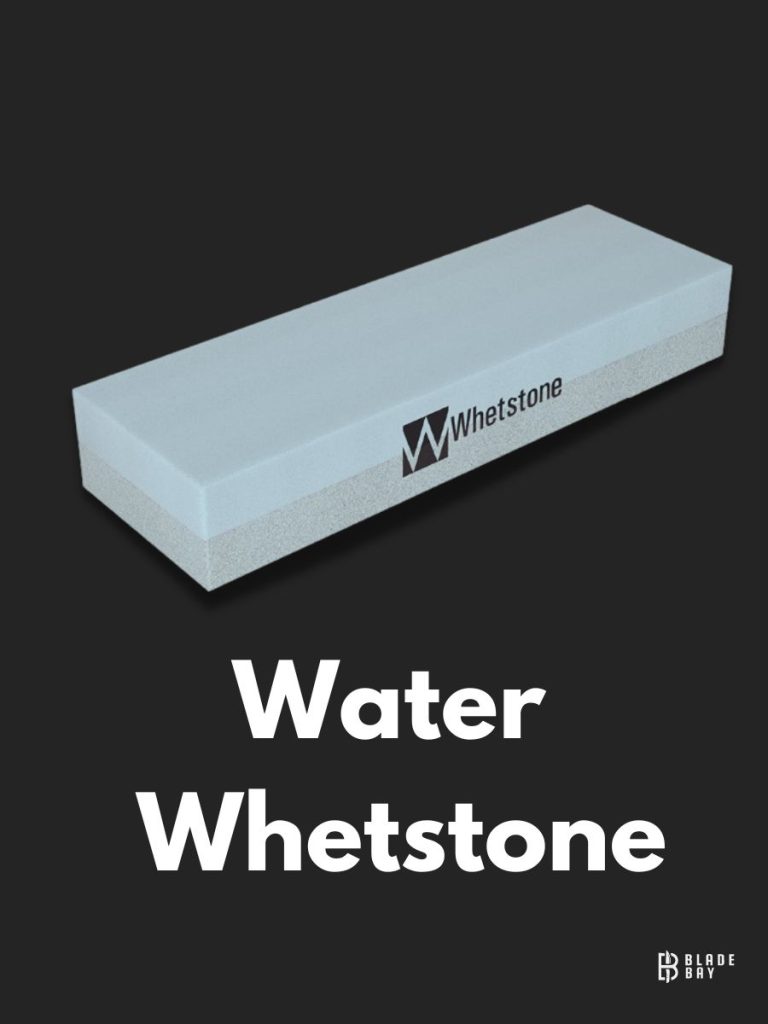
Water Stones: Water stones are made from natural or synthetic materials and require water as a lubricant. They are softer and cut faster than oil stones, making them a popular choice for sharpening Japanese-style knives.
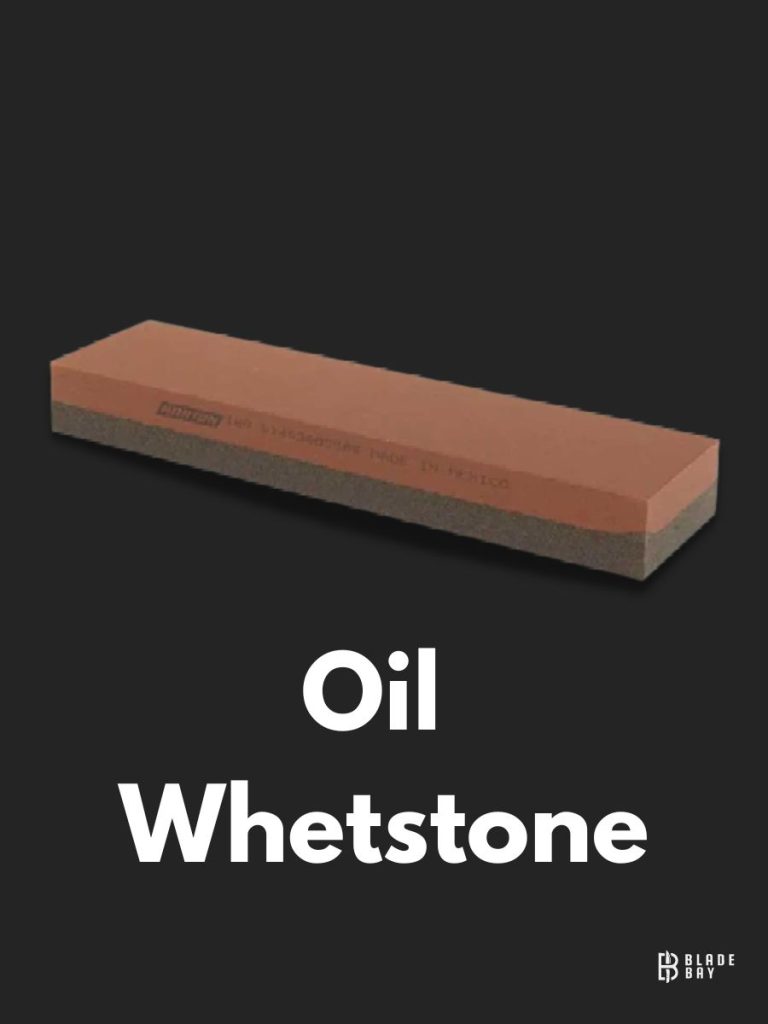
Oil Stones: Oil stones are also made from natural or synthetic materials and, in this case, require oil as a lubricant. They are harder and slower to cut than water stones, making them ideal for sharpening German-style knives. They are also available in different grits, from coarse to fine.
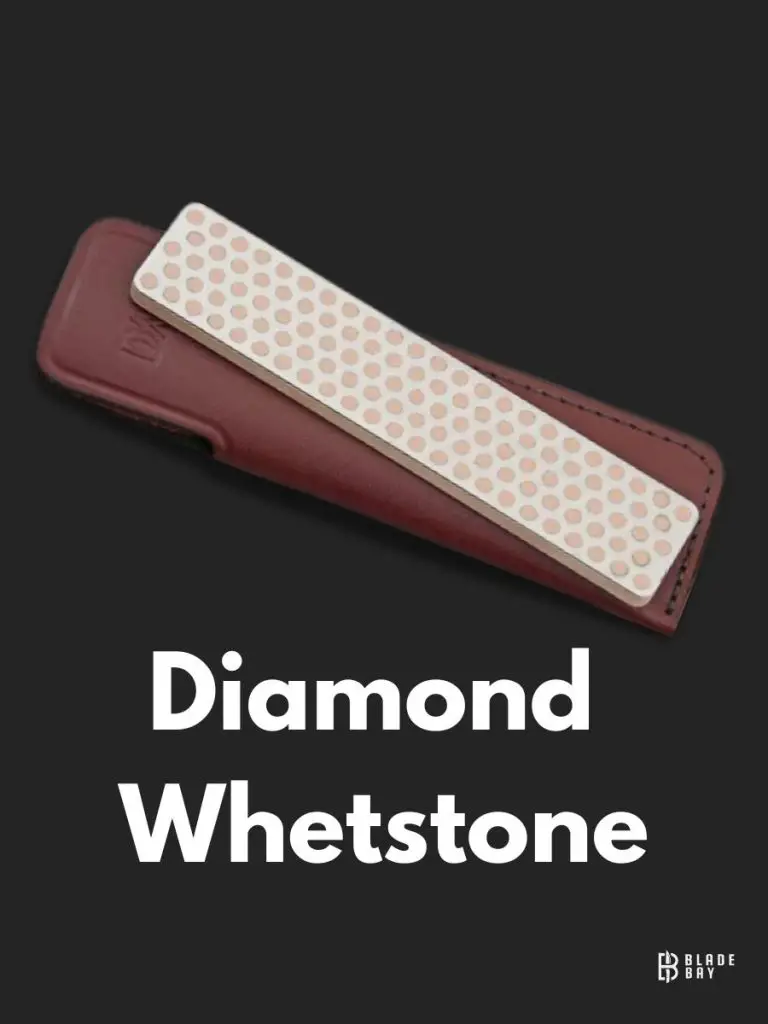
Diamond Stones: Diamond stones are made from industrial-grade diamonds bonded to a metal or plastic base. They are the hardest and fastest-cutting type of whetstone, making them ideal for sharpening damaged or dull knives.
How to Use a Whetstone for Sharpening knives?
Using a whetstone to sharpen kitchen knives might seem intimidating at first, but with practice, anyone can do it. So, to get started –
- Soak the whetstone: If you’re using a water stone, soak it in water for about 10-15 minutes before use. If you’re using an oil stone, apply a few drops of oil to the surface.
- Determine the angle: Check the manufacturer’s instructions for the recommended angle for your knife. Hold the blade at this angle and keep it consistent throughout the sharpening process.
- Begin sharpening: Start with the coarsest grit side of the stone and place it on a flat surface. Holding the knife at the correct angle, move it back and forth across the stone, applying light pressure.
- Switch sides: After several passes on one side of the knife, flip it over and repeat the process on the other side.
- Move to a finer grit: Once you’ve sharpened with the coarsest grit, move to a finer grit side of the whetstone and repeat the sharpening process on both sides of the knife.
- Finish the sharpening: Continue using progressively finer grits until you achieve the desired sharpness. Test the sharpness by lightly cutting through a piece of paper.
- Clean the blade: Once you’re satisfied with the sharpness, clean the blade with a damp cloth to remove any metal particles.
Whetstone: The Positives and the Negatives
Pros
- Customizable: With a whetstone, you can choose the angle of the edge you want to create and adjust it as you sharpen your knife.
- Precise: Whetstones allow for precise control over the sharpening process, so you can create a sharp, polished edge.
- Affordable: Whetstones are generally more affordable than knife sharpeners, making them a great choice for people on a budget.
- Long-lasting: Whetstones can last for years if properly cared for, making them a worthwhile investment.
Cons:
- Time-consuming: Sharpening your knives with a whetstone takes more time and practice than using a knife sharpener.
- Messy: Using a whetstone can be messy, as you need to use water or oil to lubricate the stone and remove metal shavings.
- Requires practice: Whetstones require more skill and practice to use effectively, so they may not be the best choice for beginners.
- Inconsistent: If you’re not careful, using a whetstone can lead to an inconsistent edge on your knife.
Knife Sharpener vs Whetstone: A Quick Compression
As for now, you probably have a solid foundation on both Wheatstone and knife sharpener. To get a clearer concept of how these two methods work on different factors, let’s have a quick look at this compression table:
Criteria | Knife Sharpener | Whetstone |
Speed | Fast | Slow but precise |
Control | Limited | Full |
Ease of use | Easy | Somewhat difficult |
Consistency | Consistent | Variable |
Versatility | Limited | Wide range |
Potential for damage | High (if not used properly) | Low (if used properly) |
Longevity | Variable (depending on quality) | Durable (with proper care) |
Final Showdown: Knife Sharpener or Whetstone?
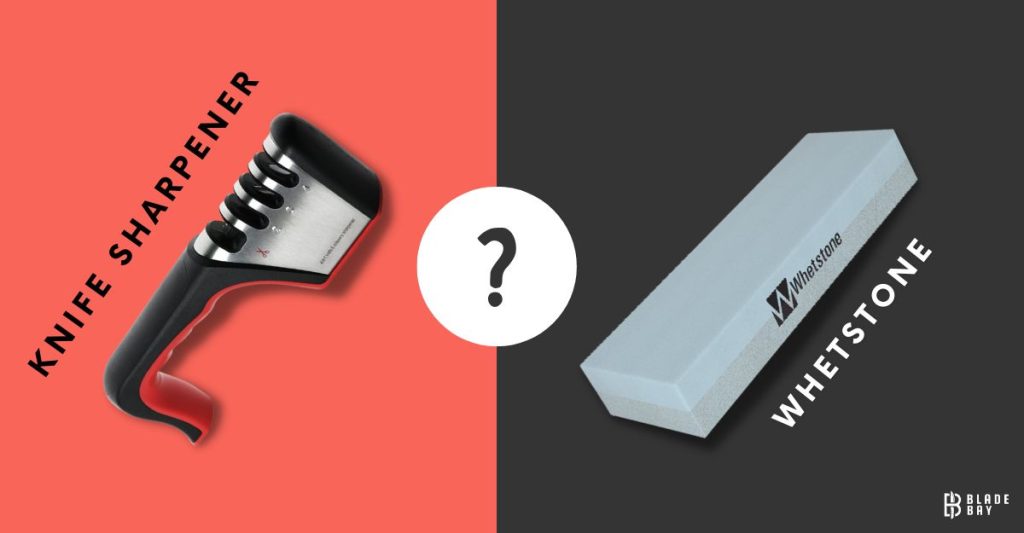
Whether to choose a knife sharpener or a whetstone depends on your personal preferences and needs. Though, we’ll select Wheatstone as the recommended sharpening tool for your knives. There are some specific reasons for that –
- Control over sharpening.
- Works on any kind of kitchen knife.
- Learning how to sharpen a kitchen knife with a whetstone is not a big deal.
- Wheatstone doesn’t remove blade material like the electric sharpeners.
- With Wheatstone, your knife lasts longer and stays sharper.
Now, if we put aside these facts –
Knife sharpeners are more convenient and easier to use for beginners or those who need quick and easy sharpening. On the other hand, whetstones offer a more hands-on approach and can provide a sharper and more precise edge with the proper technique.
So, in the end –
When choosing between a knife sharpener and a whetstone, consider your skill level, the type of knives you have, and the level of precision you need. It’s also crucial to invest in a high-quality product to ensure the best results and avoid damaging your knives.
Bonus: Other Good to Know Info’s on Knife Sharpening
Determine When Your Knife Actually Needs Sharpening
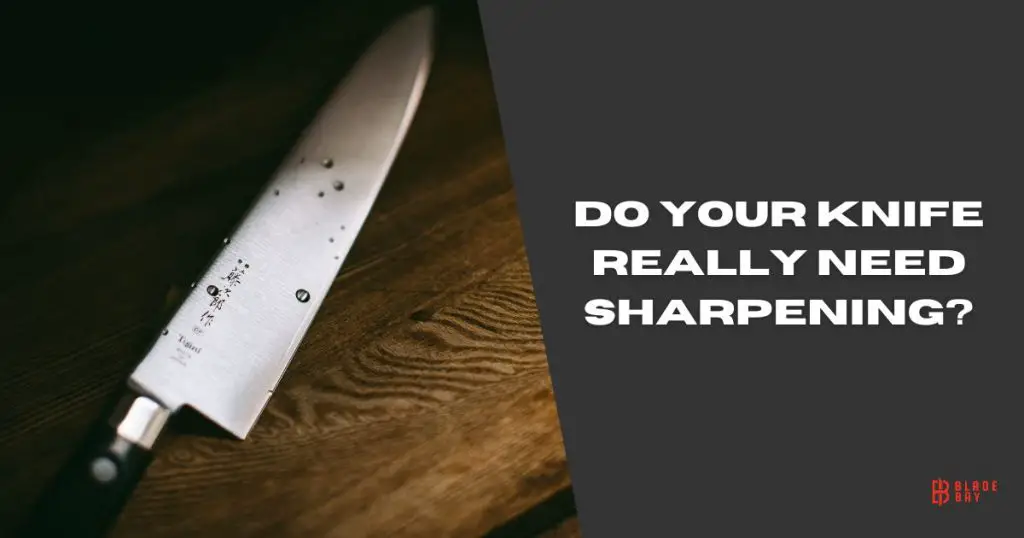
To check if your knife actually needs a quick sharpening, you can check out these awesome tricks and tips –
Trick 1: Turn over the sharp end of your knife, take your thumb, and run over the blade lightly. So, the thing is, with a sharp knife, you will feel it drags on your fingerprint. However, if your knife is dull, it would feel like running over a smooth bump.
Trick 2: This is a nice trick! When you are chopping any food with your knife, you can actually hear a sharp knife, right? you’ll barely hear a whisper when you cut. Now, if your blade becomes dull, it will make a much louder noise, as it will crush the food material first and then cut it.
Trick 3: Grab a sheet of paper slice the top half of the paper in one swift motion, and then slice downwards at an angle. If the paper cuts smoothly and doesn’t tear, congrats – your knives are already sharp enough! But if the paper tears or struggles to cut, it’s time to sharpen the blade. You can also use tomatoes to check the sharpness in this way.
Knife Sharpeners and Honing Rods: The Difference
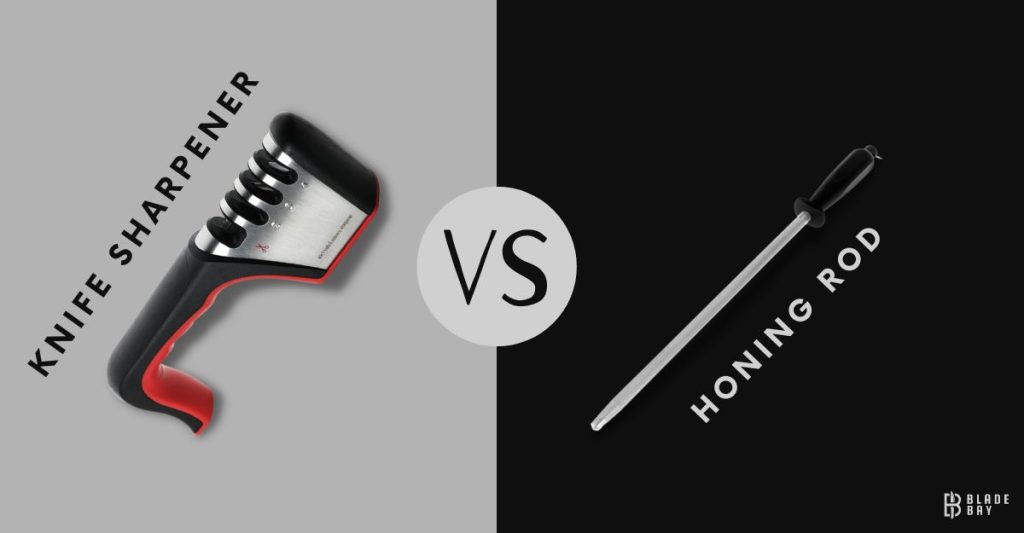
Some of us may confuse knife sharpeners with honing rods or vice versa. A head-to-head difference will clear things up –
Knife Sharpeners | Honing Rods |
Removes material from the blade to create a new, sharper edge | Does not remove material from the blade, but rather straightens and realigns the edge |
Typically has a coarse grit for removing metal and a fine grit for honing and polishing | Often made of steel, ceramic or diamond-coated steel |
Can be manual or electric | Can be used before or after sharpening to maintain the knife’s edge |
Best used for knives with dull or damaged edges | Best used for knives that are still relatively sharp but have lost their edge alignment |
Removes material from the blade to create a new, sharper edge | Does not remove material from the blade, but rather straightens and realigns the edge |
Things to Consider Before Choosing a Knife Sharpening Tool
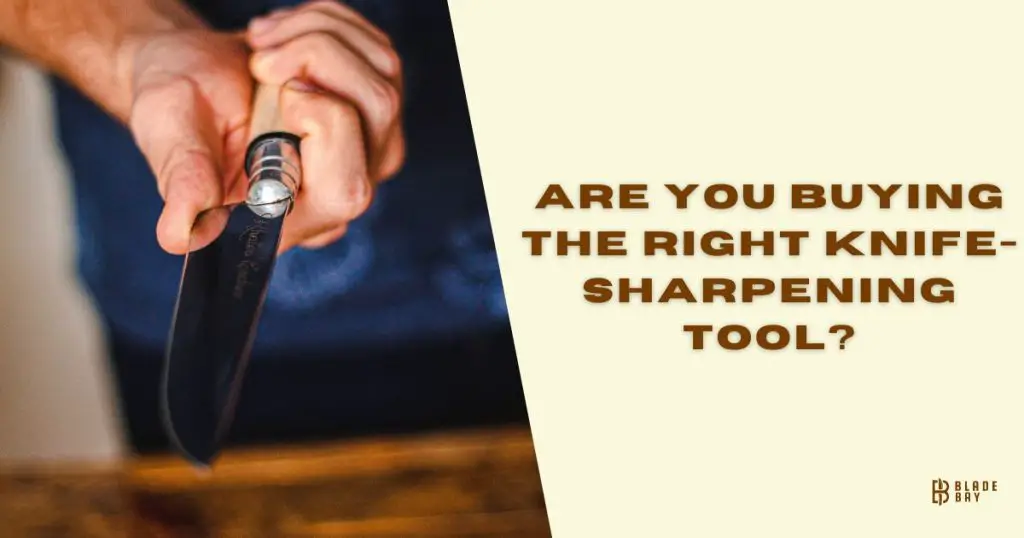
These are the things we must consider before choosing a knife sharpener, whether it’s a whetstone, manual, or electric knife sharpener.
Type of Knife: The type of knife you have will influence the type of sharpener you need. For example, serrated knives require a different type of sharpener than straight-edged knives.
Frequency of Use: If you use your knives frequently, you may need a more heavy-duty sharpener that can withstand frequent use.
Skill Level: Some sharpeners, such as sharpening stones, require more skill to use effectively than others. So, be certain about your skills with knife sharpening.
Grit: The grit refers to the coarseness of the sharpening stone or abrasive material used to sharpen the knife’s edge. It’s a common term for whetstones/sharpening stones.
A higher grit number means a finer abrasive material, while a lower number means a coarser material. The lower grit numbers help to shape the blade, while the higher numbers are used for honing and polishing.
The choice of grit depends on the intended use of the knife. For example, a hunting knife may require a coarser grit for its rough use, while a kitchen knife needs a finer grit for precise cutting.
Budget: Knife sharpeners can range in price from less than $10 to several hundred dollars. Consider your budget when choosing a sharpener.
Space: Consider the amount of space you have available for a knife sharpener. Electric sharpeners, for example, can be quite large and require a lot of counter space.
FAQs
1.Do I use a coarse or fine knife sharpener?
Ans: It depends on the condition of your knife’s edge. If the blade is very dull or has chips, start with a coarse sharpener. If it’s just a bit dull or needs a touch-up, then a fine sharpener is sufficient
2.How many times can you use a whetstone?
Ans: You can use a whetstone many times, as long as it remains flat and not worn out. Regular cleaning and maintenance will help prolong its lifespan.
3.What is the best knife sharpener on the market?
Ans: There are many great knife sharpeners available, including electric and manual models. Some popular options include the Chef’sChoice Trizor XV, the Wusthof Precision Edge Technology Sharpener, and the Lansky Deluxe 5-Rod Turn Box. Ultimately, the best sharpener for you will depend on your budget and personal preferences.

